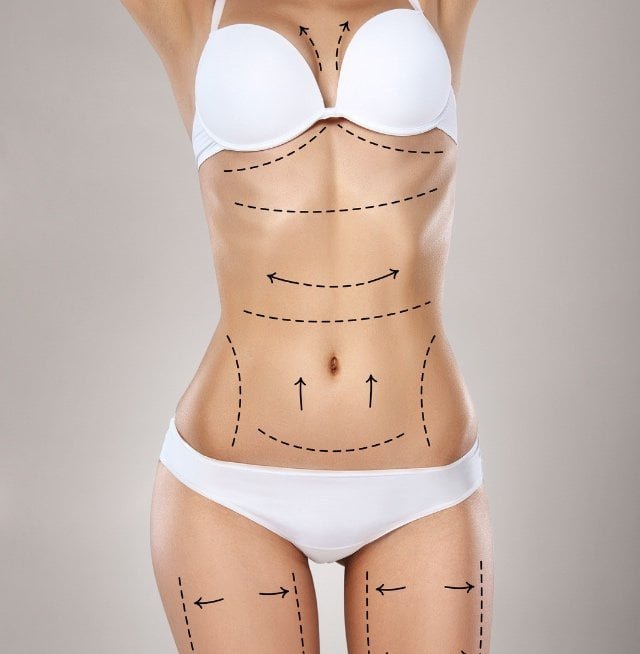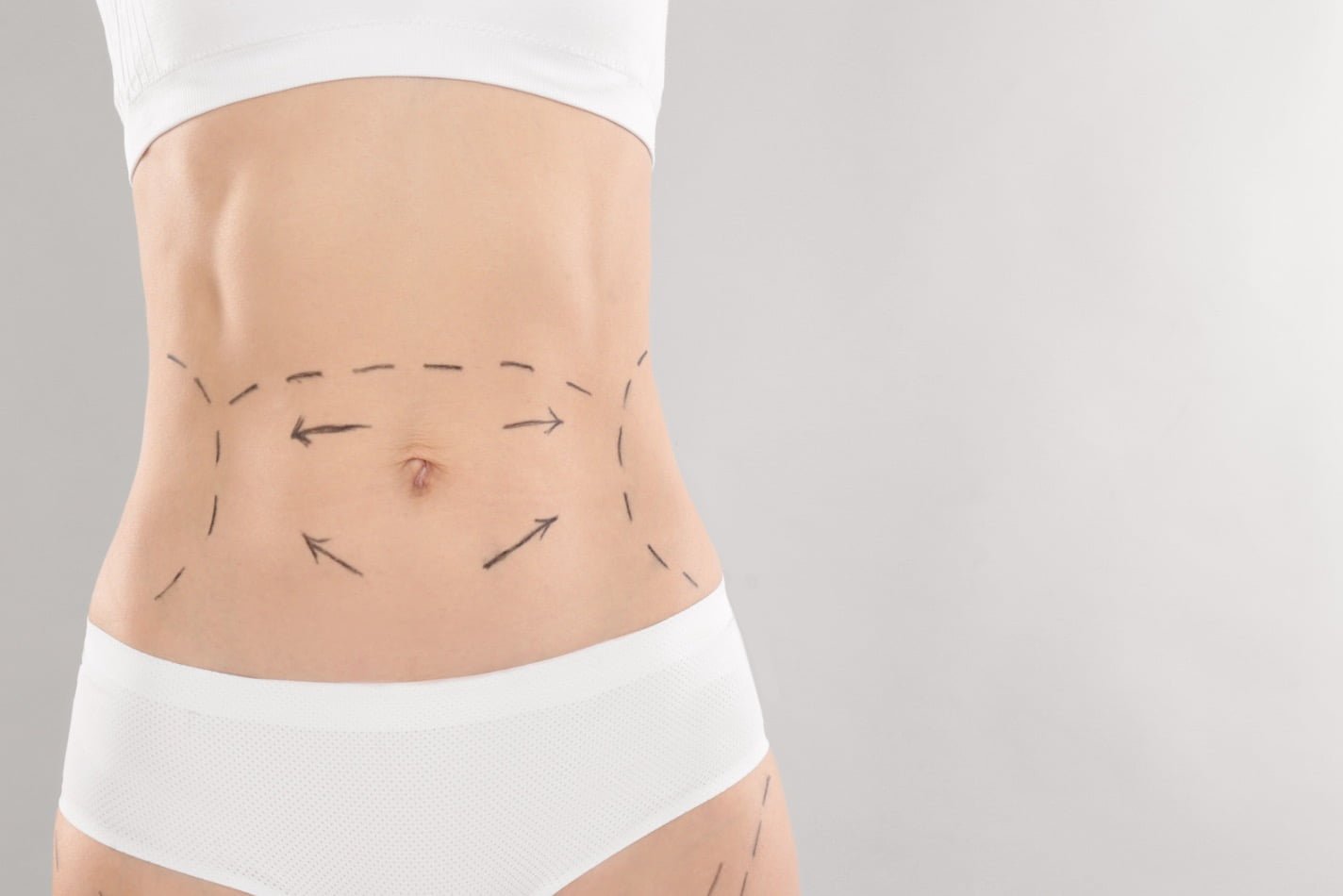Are you looking for a shapelier, more sculpted physique? Perhaps you are self-conscious about a particular part of your body that could benefit from some slimming down? Liposuction could be just the simple solution that you are looking for.
But what exactly is lipo and what can it do for you?
Liposuction or lipoplasty is a minimally invasive cosmetic surgery used to remove stubborn fat deposits from the body. It can be performed on various areas of the body, such as the abdomen, hips, thighs, buttocks, and arms.
Lipoplasty is one of the most effective ways to help you achieve a shapelier physique by removing excess fat and sculpting your body’s contours.
Being one of the most popular cosmetic surgery procedures besides a rhinoplasty, the best part is that it offers a simple way to improve your appearance without having to undergo major surgery with the associated risks and recovery. It can help you achieve your desired look quickly with minimal discomfort and speedy recovery.
In this article we explain everything you need to know, including its benefits and any potential risks. We will also explore the different types of surgery techniques, what the procedure entails, and practical information about preparing for the liposuction surgery in Miami, recovery time, results, and costs.

What Is Liposuction?
Liposuction, also called aspiration lipectomy, is a popular cosmetic procedure that helps to reshape the body by removing stubborn fatty tissue buildups. During the liposuction procedure, the surgeon uses a selective suction device to remove excess fat from specific areas of the body such as the abdomen, thighs, arms, back, waist, hips, chin, and calves.
Liposuction may also be used in combination with other procedures such as tummy tucks, breast reduction or augmentation, and facelifts for more comprehensive physical improvement.
The amount of fat removed depends on individual factors such as the size of the area being treated and the desired aesthetic outcomes. You will have the opportunity to discuss these details with your surgeon before deciding if this weight loss procedure is right for you.
What Areas Of The Body Can Liposuction Treat?
Common areas of fat buildup where patients get liposuction include:
- Neck
- Upper Arms
- Abdomen
- Back
- Waist
- Hips
- Thighs
- Calves
Liposuction can be performed on several areas at once or in conjunction with other cosmetic surgery procedures such as a breast lift or tummy tuck.
What Are The Benefits?
Liposuction offers a highly effective way to achieve a more sculpted figure by eliminating unwanted fatty buildup that is otherwise difficult to get rid of. Here are some of the main benefits of this procedure:
- Reshapes and contours your body by removing unwanted fat from targeted areas
- Enhances physical features like hips or jawline which contribute towards a more sculpted appearance
- Doesn’t involve any incisions, sutures, or surgery on underlying muscle or deeper structures, which helps reduce recovery time significantly when compared with other types of procedures like tummy tucks or breast augmentations
- Fast recovery time due to its minimally invasive nature
- Minimal scarring due to the significant improvement in techniques over the years
- Provides immediate and long-lasting results; once the fat cells are removed they cannot return or regrow so there is less risk of future accumulation in treated areas
Additionally, laser-assisted liposuction offers benefits such as skin tightening and reduced bleeding.
Different Types Of Techniques
Over the years, several plastic surgery liposuction techniques have been introduced to address the unique needs and preferences of patients and surgeons. These techniques employ different technologies and methodologies to remove the excess fat, improve the body shape, and enhance the physical appearance of the individual.
The type of procedure which is best for you depends on your specific needs as well as your local Miami plastic surgeons expertise. Here are the most common types of techniques used today:
Power-Assisted Lipo With Bodytite
The combination of power-assisted liposuction (PAL) with BodyTite is among the most advanced surgery technologies currently on the market. Significant advances have been made recently in PAL technology, allowing precise removal of fatty deposits through small port sites that are less than one tenth of an inch in size.
The procedure is most commonly performed awake with only minimal pain medication. Recovery time is likewise reduced with most patients experiencing some soreness for a couple of days.
BodyTite is a technology that addresses any skin laxity by carefully heating the skin and underlying tissues to stimulate contraction. It is a wonderful supplement to PAL for patients who may develop skin laxity after fat removal.
The technology may be used on a vast number of areas, including the chin, thighs, abdomen, and arms. To further maximize skin contracture, it may be combined with external skin tightening devices, such as Morpheus8.
Vaser Hi-Def Lipo
VASER Hi-Def Lipo is an advanced body contouring technology that applies ultrasound energy to break down stubborn fat deposits. The energy targets the fat cells only, leaving the surrounding tissues unharmed, resulting in a more comfortable procedure and faster recovery time for patients.
VASER Hi-Def Lipo is highly effective body contouring procedure in treating more fibrous fat, which is notoriously difficult to remove with other techniques. This advanced technique is an excellent option for those who would like to achieve a more athletic contour with minimal discomfort. It is also ideal for more aggressive body contouring procedures, such as etching to provide better muscle definition.
Suction-Assisted Liposuction (SAL) or Tumescent Liposuction
Suction-Assisted Liposuction (SAL) is a traditional method which is performed with the use of a slim cannula and a tumescent fluid solution to minimize bleeding and promote fat removal. A small port site is made, through which a cannula is placed and used to suck out excess fat deposits from the body.
Tumescent liposuction is a an often used liposuction technique often used to isolated areas without the need of anesthesia. SAL is nearly the same thing as tumescent liposuction the main difference is that more anesthetic fluids are used.
The main advantage of SAL is that it is simpler and therefore more affordable than newer technologies. While it may not be as targeted as more advanced methods of liposuction, it is still an effective and popular way to remove unwanted fat from the body.
Traditionally, SAL has been applied primarily to the deeper fat layers only. With the advent of more advanced technology, SAL is rarely used by Dr. Kachniarz, and generally limited for small areas, such as the chin, or used to harvest small amounts of fat for transfers to the face or hands.
Smart Lipo Triplex
SmartLipo Triplex is an innovative technique that utilizes advanced laser technology to target stubborn fat and tighten loose skin with greater precision. SmartLipo Triplex can help address concerns related to sagging skin by promoting collagen production.
SmartLipo Triplex technology applies three wavelengths of laser energy to achieve optimal results. The first wavelength breaks down fat cells, the second coagulates the surrounding blood vessels to minimize bleeding, and the third promotes collagen production to tighten the skin.
This combination enhances precision and safety, ensuring that patients enjoy excellent results without undue risks or lengthy recovery.
SmartLipo Triplex is an excellent option for removing smaller amounts of fat, making it an ideal solution for those looking for minor body improvements. The procedure is less invasive than traditional liposuction, with reduced post-procedure bleeding and bruising.
SmartLipo can help you achieve attractive, long-lasting results with minimal downtime and scarring.

Preparation For Surgery
The process begins with a liposuction consultation where Dr. Kachniarz will evaluate your overall health and determine if you are a good candidate for liposuction. During this appointment, he will discuss what your specific priorities are and what you hope to achieve through your surgery.
You will have the opportunity to ask questions about the different types of techniques and Dr. Kachniarz will help you determine the best method for your specific situation. He will also give you an idea of the type of results you can expect out of the procedure.
You will also be asked for your medical history and should inform the doctor of any medications you are taking. He will explain if you need to discontinue any of them or change your lifestyle in any way before the procedure takes place.
You may also be asked to plan for the surgery by taking the following steps:
- Getting a lab test or medical evaluation to confirm you are fit for surgery
- Quitting smoking at least two weeks before the scheduled procedure date
- Eating healthy and getting plenty of rest
- Avoiding alcohol consumption to minimize the risk of complications during and after the operation
- Avoiding aspirin, anti-inflammatories, blood thinners, and other drugs which can increase bleeding
Taking these proactive measures is essential in helping ensure optimal results.
Procedure Details
Liposuction procedures typically take between one and three hours depending on how much fat needs to be removed during each session, as well as the specific procedures being used.
It is crucial to have the procedure performed by board-certified plastic surgeons for safety and optimal results.
Local anesthesia (numbing medicine) is usually used to numb the area being operated on and reduce discomfort during the procedure. General anesthesia is rarely needed and just unnecessarily increases the risk to the patient.
After the procedure, there may be swelling and soreness in the treated areas. This generally resolves within a few days to weeks depending on your individual circumstances.
While results vary from person to person, most people experience noticeable improvements immediately following their procedure, with more visible changes becoming apparent after they have healed completely and all swelling has resolved.

Liposuction Recovery Time And Tips
The liposuction recovery time can vary for different people, but typically patients are advised to rest for a few days before returning to work and other normal activities.
More strenuous activities should be avoided for a couple weeks. It’s important to follow your surgeon’s instructions regarding care during this period to ensure optimal results.
You may be instructed to wear a compression garment for 4 weeks following the procedure, as this helps reduce swelling and provides support to the area that was treated.
Dr. Kachniarz will also suggest other methods of reducing post-operative discomfort and avoiding complications, which you should follow carefully. This may include supplements such as Arnica and Bromelain, which may help reduce bruising and swelling.
Dr. Kachniarz will give you instructions to follow during the recovery period, which may include:
- How to care for the surgical site after surgery
- Medications to take to help with the healing, reduce the risk of infection, and ease pain
- Instructions to maintain an overall healthy lifestyle which includes regular exercise (once recovered) and a balanced diet to optimize the results following the procedure
- Avoiding medications that could interfere with the healing process, including blood thinners, anti-inflammatories, and aspirin products
- Drinking plenty of fluids to help flush out toxins from your body while also promoting faster healing time
Long-Term Results
Liposuction provides immediate visible results following the procedure. Over the weeks which follow, the contours of your treated area will continue to improve as the swelling subsides, finally settling into the final desired shape.
Most people are extremely satisfied with the long-term effects, finding that it provides permanent improvement and leaves the treated area noticeably slimmer, smoother, and healthier looking. Once the fat cells are removed through liposuction, they cannot return or regrow in the treated area.
That said, it is also important to have realistic expectations about what can be achieved through cosmetic surgery. It is not a “fix all” cosmetic procedure, and the outcomes are dependent on factors such as the patient’s age and health condition before the procedure as well as how much fat was removed during the operation.
It’s also important to keep in mind that this type of body contouring does not change the underlying muscle structure, so additional treatments such as muscle toning exercises might be needed in order achieve the desired aesthetic improvements in some cases.
The procedure also doesn’t improve skin tone or texture; it simply reduces localized areas of fat accumulation. It may be combined with adjunct treatments, such as BodyTite and Morpheus8 to reduce any skin laxity.

What Are The Risks?
Liposuction is a safe and common cosmetic procedure, but like any surgical operation, there are always liposuction risks and potential complications. Some of the risks and complications include:
- Skin contour irregularity
- Minor asymmetry
- Excess skin
- Bruising and/or bleeding
- Prolonged swelling
- Infection
- Numbness
- Fat clots
Dr. Kachniarz takes every precaution and measure to ensure that your procedure is safe and effective, and therefore reduces the risk of complication to an absolute minimum.
How Much Does A Miami Liposuction Cost?
The cost of liposuction in Miami varies greatly depending on the areas being treated; prices generally start around $2,000 – $5,000 for a small area and increase with additional areas or adjunct treatments, such as skin tightening options.
Liposuction is considered a long-term solution for removing fatty deposits in areas of the body, so if this is something you’re considering for a lasting improvement, then the initial investment is worth it.
Keep in mind that it’s unlikely to be covered by health insurance since it’s considered aesthetic surgery; however, there are various financing options available which can help make payment more manageable.
Feel free to book a consultation today and we can discuss your needs in more detail, as well as answer any questions you have about your options.

Frequently Asked Questions
What Is The Difference Between Subcutaneous And Visceral Fat?
Subcutaneous fat is the soft, “pudgy” fat which is located just beneath the skin, primarily in areas such as the thighs, arms, flanks, and abdomen.
Visceral fat, on the other hand, is located deep within the abdominal cavity, surrounding internal organs such as the liver, pancreas, and intestines. It usually presents as bulging or distension of the abdominal wall and muscles, and may render the areas harder to the touch.
It is important to understand that liposuction can only help to remove subcutaneous fat. Visceral fat needs to be addressed with regular exercise and a healthy diet.
Does Lipo Tighten Loose Skin?
Liposuction itself is not an effective treatment for loose skin. The procedure works by removing excess fat cells, but it does not address excess abdominal skin or the quality or elasticity of the overlying skin directly.
However, there are a number of adjunct technologies that may be used to tighten any loose skin and tissues. These include BodyTite, Morpheus8, Renuvion J-Plasma, and VASER. Each technology has unique features that ultimately aim to stimulate the production of collagen and elastin in the skin.
The degree of skin tightening achieved will vary depending on the individual’s skin elasticity, the amount of fat removed, and other factors. It is important to note that such non-invasive options can be a wonderful adjunct to maximize your results, but rarely obviate the need for surgery in cases of more extensive skin excess.
Will Fat Cells Return To The Area After The Procedure?
Liposuction permanently removes fat cells from an area, although it intentionally does leave a small amount of fat cells behind. Gaining significant weight later can increase the size of the remaining fat cells in the treated area, but the relative sculpting and shape after liposuction is permanent. That said, it is important to maintain optimum results through a healthy diet and regular exercise.
What Is The Difference Between Liposuction And A Tummy Tuck?
Liposuction is a simple procedure that only removes localized fat. On the other hand, a tummy tuck is more complex and involves the surgical removal of excess fat and skin from the abdominal area and tightening of the muscles.
Liposuction is generally less invasive and has a faster recovery time than a tummy tuck; however, it cannot achieve the same degree of abdominal sculpting as a tummy tuck since it does not address loose skin or weak abdominal muscles.
Generally, liposuction is well-suited for individuals who have good skin elasticity, meaning the skin can tighten and conform to the body’s new shape after the fat is removed. A tummy tuck is typically recommended for patients with poor skin elasticity or those whose abdominal muscles have weakened due to pregnancy or weight fluctuations. A tummy tuck and liposuction are often combined to achieve optimum results.
References
[1]A journey through liposuction and liposculture: Review. Annals of Medicine and Surgery. https://www.sciencedirect.com/science/article/pii/S2049080117303916
[2] The Safety of Liposuction: Results of a National Survey. Dermatologic Surgery. https://onlinelibrary.wiley.com/doi/abs/10.1046/j.1524-4725.2002.02081.x



